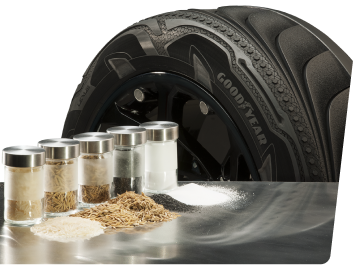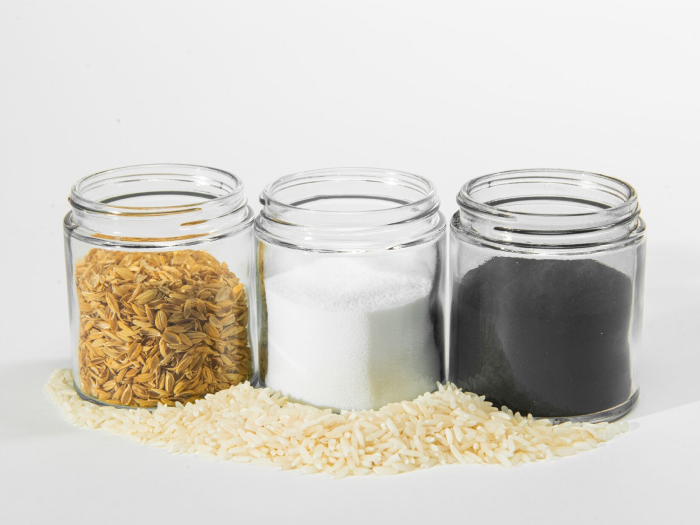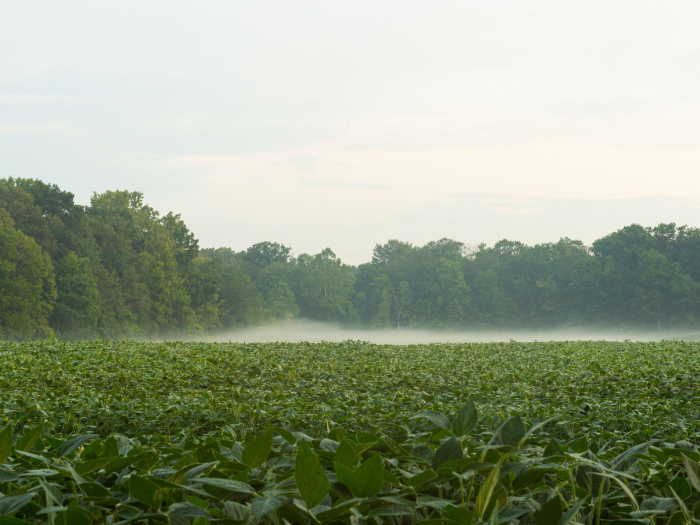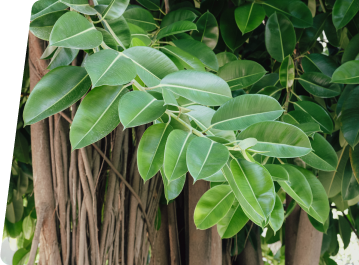Commitments / Sourcing Sustainably

Sourcing Sustainably
At Goodyear, we strive to make an impact through our choice of the materials we use.
At Goodyear, we are committed to responsibly managing the materials we use for our operations and products. We proactively work with our suppliers to identify and evaluate environmental and societal impacts, risks and opportunities, while collaborating with them on ways to build a more sustainable and resilient supply chain.
We are committed to managing sourcing in a way that helps reduce environmental and social impacts and improve our global risk management. This includes our efforts to source sustainable natural rubber and increase our sustainable material usage.

Sustainable Materials
Product quality, safety and customer satisfaction are our ultimate goals. We actively seek sustainable material options that deliver product performance while meeting our high standards of quality and safety. To advance our sustainable material use, our teams work to investigate new alternative raw materials and incorporate innovative solutions.
Goodyear actively reviews definitions and standards that continue to mature. The company currently defines a sustainable material as bio-based (originating from biological sources); renewable (composed of replenishable biomass); or recycled (reprocessed from reclaimed materials) material as defined in ISO 14021; or one produced using or contributing to other practices designed to promote resource conservation and/or emissions reductions.

Rice Husk Ash Silica
We use a silica product made from residual rice husk ash — a byproduct of rice processing. Rice husk ash (RHA) silica can help deliver performance similar to traditional sand-based silica yet is more environmentally friendly and helps reduce waste going to landfill. Over the past several years, we have introduced the use of RHA silica in several of our global manufacturing facilities and are working closely with our suppliers to explore further expanding the use of RHA silica.

Our Use of Bio-Based Oils
Goodyear continues to use bio-based oils to help us reach our goal of fully replacing petroleum-based oils in our products by 2040. We remain committed to continuing to advance the science and technology and conduct research to bring new materials that deliver quality and performance.

Natural Rubber
Social and agricultural practices in natural rubber production can vary greatly and can have significant impacts on the livelihood and rights of local people, as well as local ecosystems through potential habitat conversions and reduction of species from deforestation.
Goodyear does not own any rubber tree plantations, but we have taken actions as purchasers of natural rubber. Our Natural Rubber Procurement Policy aligns with the Global Platform for Sustainable Natural Rubber's (GPSNR) Policy Framework.This alignment signals our strong natural rubber supply chain commitments across all aspects of sustainability.
Through the Tire Industry Project (TIP), Goodyear worked with other stakeholders, including automakers, rubber producers and other end users, to move the natural rubber supply chain toward natural rubber sustainability. TIP members and others launched the GPSNR in 2018.
Goodyear prioritizes engagement directly within GPSNR Working Groups or indirectly as necessary, as GPSNR facilitates the natural rubber industry’s move towards a more sustainable supply chain.

Supply Chain Management and Transparency
When managing our supply chain, Goodyear considers all aspects of the supply chain. We work with our suppliers to continuously increase the overall sustainability-focused performance of our supply base.
Goodyear’s supply chain is complex, and Goodyear is exploring processes and technologies to enhance supply chain transparency, tracking materials along development paths from agricultural production to storage, distribution, processing, manufacturing and more.
We plan to continue to invest in our supply chain transparency.